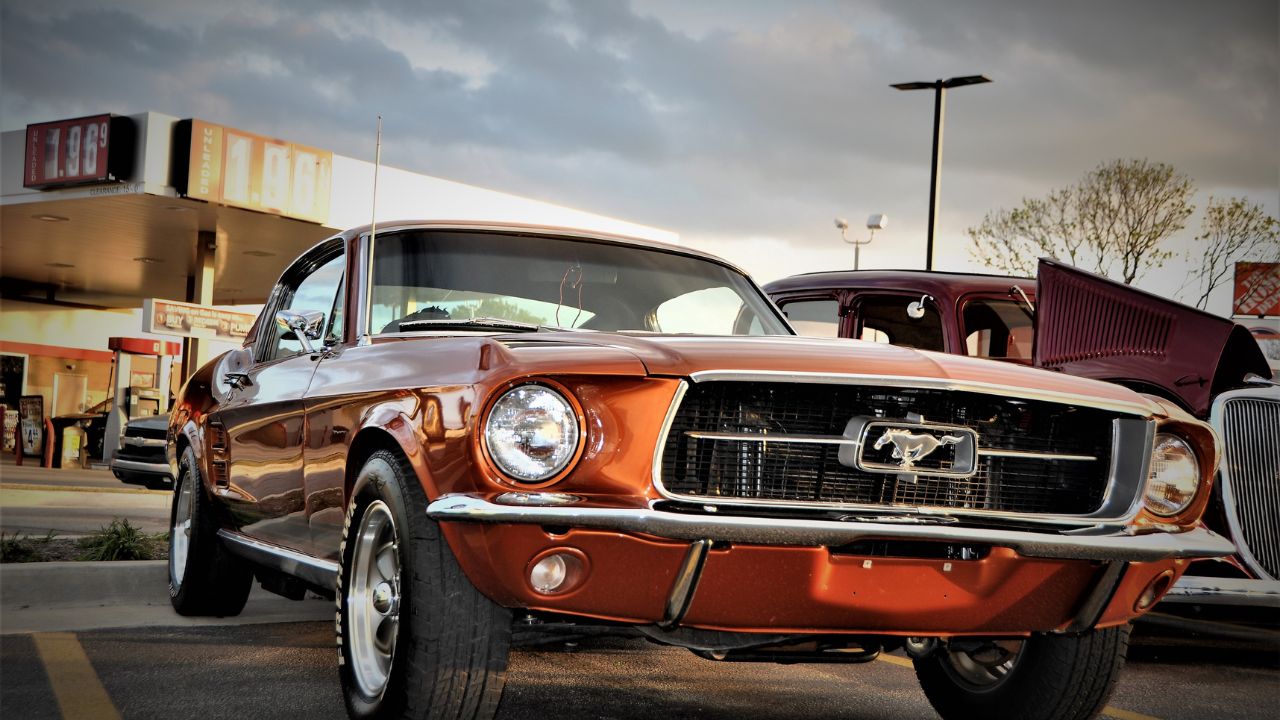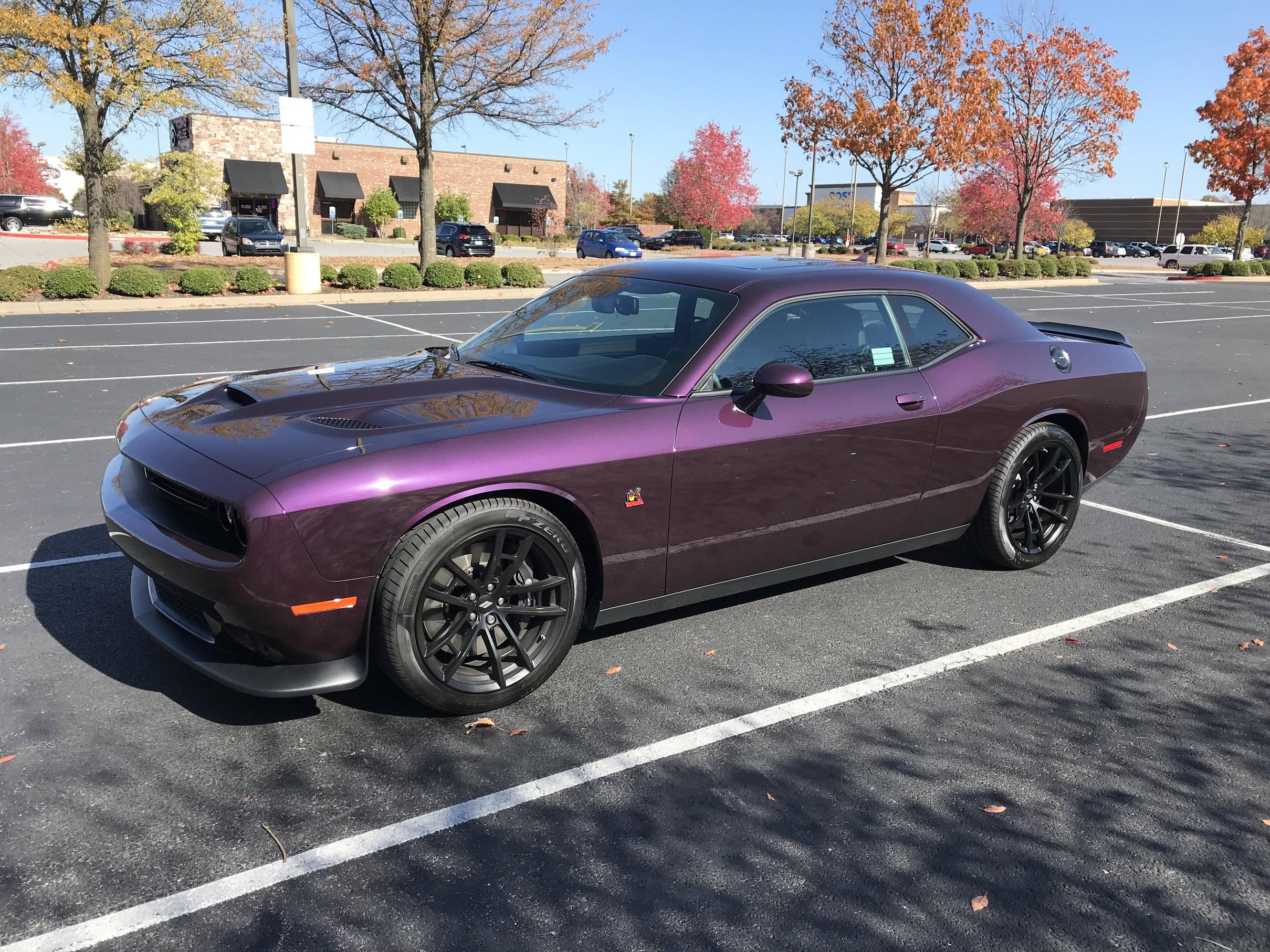
It doesn't really matter if your goal is to find a fun sports car or a fully-fledged muscle car. The Dodge Challenger muscle car has an attitude that is unlike any other on the road. The sixth-generation Camaro, meanwhile, is a sporty sports car dressed in a pony-car suit. The Ford Mustang however is somewhere in between, thanks to its relaxed attitude but spirited performance.
Dodge Challenger
A comparison between the Dodge Challenger and the Mustang or Camaro will help you find a car that's both unique and fast. Although each model has its own personality, the Dodge Challenger is the classic muscle car. The Challenger muscle car is the largest and most expensive, and has been around for more 10 years. The car has also gained popularity over the years. The interior is larger than the Mustang and Camaro so it won't be cramped.
The Challenger offers premium comfort. The interior features leather upholstery, power adjustable seating, and optional heated or ventilated front chairs. The leather-wrapped steering knob adds to the cars luxurious feel. The Challenger is more spacious in terms of cargo and passengers. It can seat up to five passengers and has an impressive 16.2 cubic feet of cargo space. This is a great car for those drivers who want to be able to transport their friends and family.

Ford Mustang
There are two options for mid-sized muscle cars: the Ford Mustang and Dodge Challenger. Both are V8-powered vehicles that will leave you wanting more. Officially, the Mustang will consume 13.3 liters per hundred kilometers, while the Challenger will consume 14.2 liters per hundred kilometers. However, both cars use premium fuel. You have better options if your goal is to get to work in a car that won't break the bank.
Both cars come with side and front airbags. Both have standard automatic high-beam headlights, adaptive cruise control, blind-spot monitoring, and rear cross-traffic alert. Both cars come standard with seatbelt pretensioners as well as four-wheel antilock brakes. Standard rear parking sensors can be added to the Mustang. Each car comes with a standard rear parking sensor.
Chevrolet Camaro
Both the Chevrolet Camaro as well as the Dodge Challenger are capable of competing in terms of horsepower. The Camaro is a more powerful vehicle, with a higher price tag. However it can be fun to drive and also has more horsepower. Camaro is more powerful than the Challenger, and also has a premium interior. The Camaro features a wide, flat-bottom steering wheel with unique ventilation controls, and the Challenger has an excellent, albeit unspectacular, interior.
Comfortably, the Challenger comes with heated exterior mirrors and a seatback armrest. The Camaro, on the other hand, has neither. The Challenger has a center folding armrest that provides additional space for rear passengers. This can also serve to keep parents and children separated. The Challenger also has dual-zone air conditioning that allows the driver and front passenger to select a different temperature. The Challenger is also more spacious for cargo.

Dodge Challenger Hellcat
The Dodge Challenger is the obvious choice when comparing the Ford Mustang to the Chevrolet Camaro. Its engine, based on the 6.4-liter "Apache," is supercharged with Demon hardware to generate 797 horsepower and 707 pound-feet of torque. It weighs in around 4,527lbs, which is roughly the same as a Ford Edge loaded to its maximum.
The Ford Mustang Shelby GT500 won almost four seconds in the Edmunds drag racing race. The Dodge driver accidentally used first gear at launch and misaligned his shift. The Camaro driver made a comeback in the third race and passed the Mustang just before the finish.
FAQ
Is it important which college I go?
Non, really. In terms of getting into the auto industry, there is no distinction between colleges. However, some schools offer better programs than others so if you're looking for something more specialized, look elsewhere.
How long is an automotive mechanic apprenticeship
It takes approximately three years to complete an automotive mechanic apprenticeship. It includes two years of school and two years as an apprentice. The first year teaches you all aspects, from theory to practical skills and safety procedures. You'll also learn the safe and efficient use of tools during this first year. After completing the first year, you'll then spend another year on-the-job training where you'll gain experience in different areas of the trade. These periods will also give you the chance to take formal courses.
The final year of the program is spent gaining qualifications and becoming certified in the field. These include NVQs (National Vocational Qualifications), which are awarded after passing exams covering specific topics within the industry. Additionally, HNCs are Higher National Certificates that cover general subjects such management, customer service, and business administration. City & Guilds certificates can be obtained for individuals who want to learn certain trades.
How can I fix my automobile as a hobby.
Take up a hobby in car repair if you have an interest. You could repair them yourself, buy parts for them and sell them. Or just have fun with them. It's a fun hobby that you can do if it interests you.
However, it's not easy to turn this into a full-time career. It takes a lot of dedication and hard work. And you'll need to invest a lot of money too.
You may not be able to have an emotional connection with cars unless there is a valid reason.
What are the basics of car mechanics?
To work as an auto technician, you don’t need to know much about cars. It's enough to know how to fix things. It's why many people begin to fix things by fitting brake pads or changing tires.
You need to be able read and comprehend diagrams, follow written instructions and adhere to basic principles of good practice. You will also need to understand how parts should be replaced or repaired.
It is important to remember that proper training and guidance are essential for anyone who attempts to repair vehicles. This is especially true if you deal with expensive components such as engines or transmissions.
In fact, even though you won't need to know much about cars, you will need to thoroughly know the basics of mechanical engineering and physics. This means understanding the principles behind how engines work and how brakes function.
You should also be ready to handle all kinds of situations. For instance, you might find yourself in charge of a vehicle that has been in a serious accident. You will also need to be able to deal with accidents and breakdowns.
Finally, you must be willing to learn new skills quickly. It is important to be able both to diagnose problems and perform simple maintenance tasks, such as tightening nuts.
What qualifications does a truck mechanic need?
Although you don't need to have any formal qualifications, your experience working with trucks and engines is invaluable. You are a valuable asset as you can quickly diagnose and solve problems efficiently.
Your knowledge of diesel technology will allow you to identify the parts that are required to fix our vehicles.
Statistics
- The U.S. Bureau of Labor Statistics (BLS) reports that the job outlook for automotive service technicians and mechanics is expected to decline by 4% from 2019 to 2029. (indeed.com)
- 52% of Mechanics in the United States think their salaries are enough for the cost of living in their area. (indeed.com)
- There were 749,900 jobs available for automotive service technicians and mechanics in 2016, which is expected to grow by six percent through 2026. (jobhero.com)
External Links
How To
How to correctly diagnose your vehicle for repairs
Before you can determine if your car requires repairs, it's important to first analyze the symptoms. These steps will help you diagnose your car properly.
-
Check engine lights. Check the dashboard light indicators such as the engine light indicator, the oil pressure gauge, the battery light indicator, the coolant temperature gauge, and the RPM gauge. You may have a problem with your vehicle if any of the indicators are flashing for more than a few days.
-
Examine the treads of the tires. Tires that are worn can cause issues with handling and braking. The treads of the wheels should be inspected as well. They should be clean, and they should be smooth. This can be done by removing the wheels from the vehicle and taking them off. Check the tread condition with a flashlight.
-
Check the level of brake fluid. It is important to keep track of how much brake fluid you have in your car. This helps ensure that your brakes operate properly. Your brakes may fail if the brake fluid level drops.
-
Test the suspension system. It is common for vehicles to have a suspension system which absorbs shocks or vibrations. It provides better control and allows smoother acceleration and deceleration. If your vehicle has a suspension problem, it might feel wobbly or shake uncontrollably. To test whether your vehicle has a suspension issue, try putting weight on the front or rear axle and observe the movement.
-
Examine your steering column. The steering columns are what connect the steering knob to the rest. Many accidents can cause damage to steering columns. You should replace the steering column if it is loose or weak.
-
Pay close attention to the exhaust tube. The exhaust pipes transport gases from the combustion chamber to outside. Your cabin will be effected if your exhaust pipe cracks or leaks. It is also important to repair any bends in your tailpipe immediately.
-
Look under the hood. Look underneath your hood to see if anything looks strange. There could be fluid leaking from your engine. A professional technician should be contacted if your engine compartment emits an unusual smell.
-
It is important to inspect the air filter. The vehicle's outside environment may cause the air filter to collect dust and debris. Dirty air filters can cause your vehicle to run poorly. Replace your air filter regularly.
-
Check the fan belt. The fan belt that connects your vehicle to the transmission is called the engine fan belt. If the fan belt fails, the engine won't start. The process of replacing the belt is straightforward. All you need to replace the belt is a screwdriver with pliers.
-
You should inspect the radiator and hoses. The radiator hose transports water from radiator to engine. If it becomes cracked or damaged, it can leak hot liquid onto the engine. The hose can be repaired with a pair or needle-nosepliers, and a wire brush.
-
You should inspect the windshield wipers. Windshield wipers use electricity to remove snow and rain. If they stop functioning, they can leave streaks in your window glass. You can fix the problem by changing the washer fluid.
-
The battery cables should be checked. Batteries provide power to electrical systems inside your car. When you replace batteries, make sure to disconnect the negative cable first. Failure to do so can damage your alternator.
-
Be sure to check your headlights. Headlights help you see the road ahead. They can make it difficult to see if they stop working. To check if the bulbs have gone out, you can inspect them.
-
Make sure you have your lights on. When you approach them at night, the lights warn other drivers. It could cause distraction and even lead to an accident if it doesn't work.
-
Check the brakes. Brakes will reduce the speed of your car in case of an accident. You could lose control of the car and cause a crash if they don't work properly.
-
Make sure to change the oil. Oil keeps your engine lubricated. It protects metal parts and prevents them from wearing too quickly. It is recommended that you change your oil at least once per month.